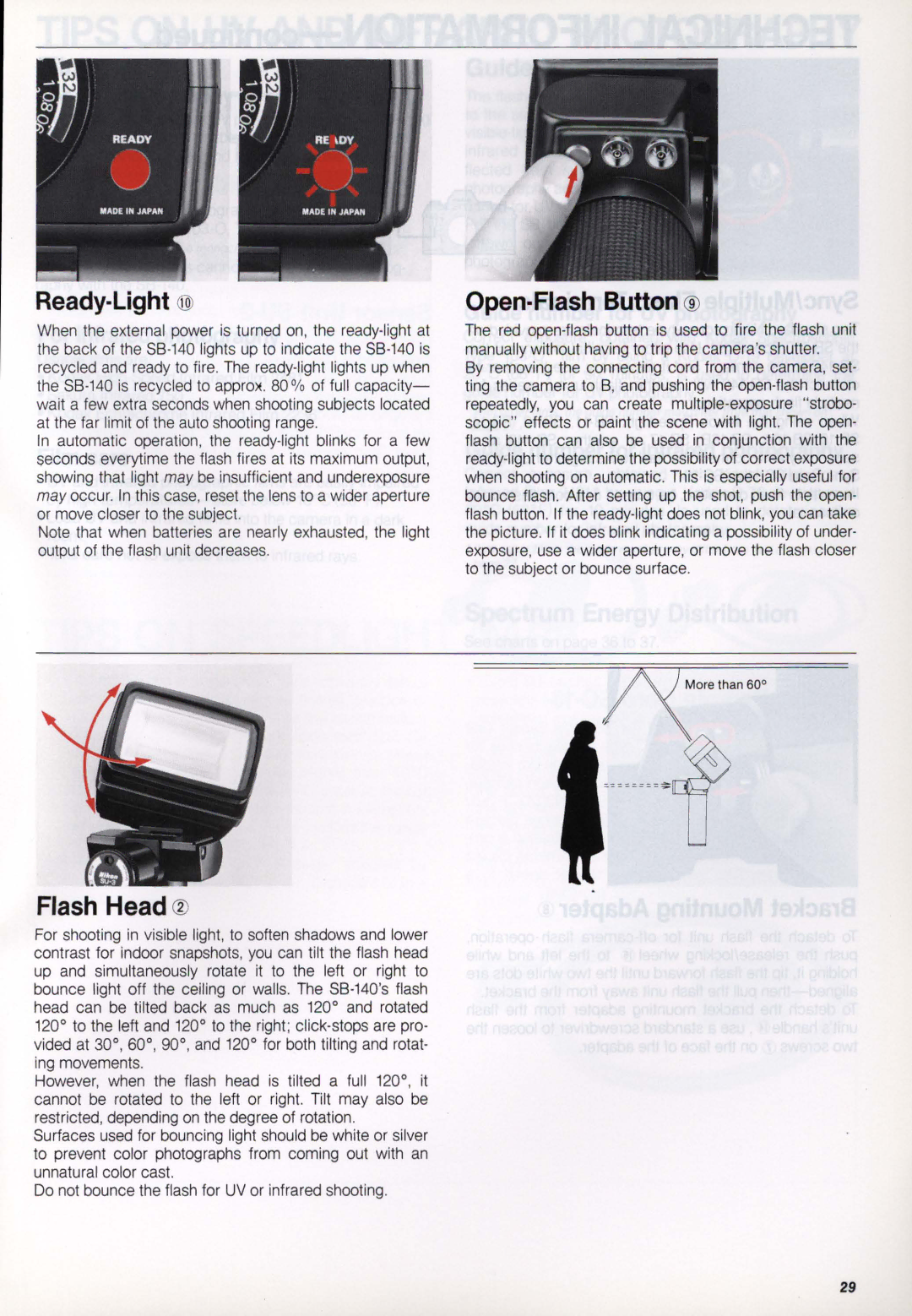Ready-Light @
When the external power is turned on, the ready-light at the back of the 8B-140 lights up to indicate the 8B-140 is recycled and ready to fire . The ready-light lights up when the 8B -140 is recycled to appro)(. 80 % of full capacity- wait a few extra seconds when shooting subjects located at the far limit of the auto shooting range.
In automatic operation, the ready-light blinks for a few seconds everytime the flash fires at its maximum output, showing that light may be insufficient and underexposure may occur. In this case, reset the lens to a wider aperture or move closer to the subject.
Note that when batteries are nearly exhausted, the light output of the flash unit decreases.
Flash Head @
For shooting in visible light, to soften shadows and lower contrast for indoor snapshots, you can tilt the flash head up and simultaneously rotate it to the left or right to bounce light off the ceiling or walls. The SB -140's flash head can be tilted back as much as 120° and rotated 120° to the left and 120° to the right ; click-stops are pro- vided at 30°, 60°, 90°, and 120° for both tilting and rotat- ing movements.
However, when the flash head is tilted a full 120°, it cannot be rotated to the left or right. Tilt may also be restricted, depending on the degree of rotation.
Surfaces used for bouncing light should be white or silver to prevent color photographs from coming out with an unnatural color cast.
Do not bounce the flash for UV or infrared shooting.
Open-Flash Button ®
The red open-flash button is used to fire the flash unit manually without having to trip the camera 's shutter.
By removing the connecting cord from the camera, set- ting the camera to B, and pushing the open-flash button repeatedly, you can create multiple-exposure "strobo- scopic" effects or paint the scene with light. The open- flash button can also be used in conjunction with the ready-light to determine the possibility of correct exposure when shooting on automatic . This is especially useful for bounce flash. After setting up the shot, push the open- flash button . If the ready-light does not blink, you can take the picture. If it does blink indicating a possibility of under- exposure, use a wider aperture, or move the flash closer to the subject or bounce surface .

